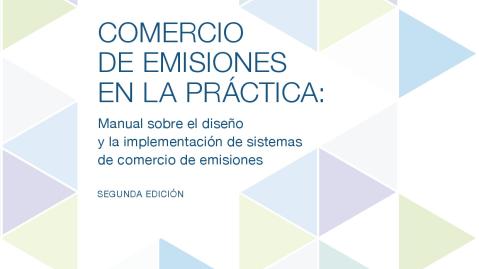Now available in Spanish: Updated Handbook for Emissions Trading Design and Implementation

Now available in Spanish: Updated Handbook for Emissions Trading Design and Implementation
Blog post developed by the World Bank and ICAP
The World Bank and the International Carbon Action Partnership (ICAP) have released the Spanish version of the second edition of their 'ETS Handbook', available here.
In 2018, the IPCC placed a focus on the need to limit warming to 1.5 Celsius and the importance of achieving global net zero emissions by 2050. More than half of the world’s greenhouse gas emissions are now covered by a net zero law, proposed legislation or target fixed in policy documentation. Well-designed and ambitious carbon pricing instruments can work alongside other climate policies to help countries reduce emissions while also helping to raise revenues.
One way to put a price on carbon is through an emissions trading system (ETS). It provides a high level of certainty on emissions outcomes and fosters alignment with ambitious emissions targets, budgets, or trajectories. As of 2021, 24 such instruments are in operation across four continents (ICAP, 2021).
But how can governments design an ETS to suit different policy objectives and jurisdictional contexts?
The ETS Handbook
To provide guidance and consolidate lessons learned from existing carbon markets, the World Bank and ICAP jointly published “Emissions Trading in Practice: A handbook on ETS design and implementation” in 2016. The Handbook walks readers through the major design choices in an ETS, alongside case studies and academic studies that highlight the key issues and tradeoffs that arise when considering – and then operating – an ETS. This Handbook has been an essential guide for policymakers, and has been downloaded over 37,000 times in English, Chinese, Spanish, Turkish, and Ukrainian.
The need for an update
Over the last few years, much has changed not only in the ways in which the climate challenge is being tackled, but also in the design and operation of ETSs, with older markets maturing and new markets emerging in different policy and economic settings. Established systems, like those in the EU, California and Québec, the Regional Greenhouse Gas Initiative, and New Zealand have enacted major reforms to ensure their systems can continue to support the achievement of increasingly ambitious climate targets. How ETSs can be aligned to achieve net zero goals without threatening domestic competitiveness, and how to provide some level of market stability against economic shocks are just some of the questions facing today’s ETSs.
Equally, with many systems now emerging in Asia and Latin America, new lessons are being generated on how cap-and-trade systems can function in different regulatory and policy environments. At the start of 2021, China launched its national ETS, becoming the world’s largest carbon market, and Mexico is implementing the pilot phase of its ETS. These new markets are not only dealing with questions of ambition and leakage, but also tackling the issue of sending a price signal in more heavily regulated power sectors.
Both new and established systems are confronted by emerging challenges and opportunities. With jurisdictions moving at different speeds towards net zero, there is an increasing focus on ensuring that domestic efforts to decarbonize do not threaten the competitiveness of local industries.
Policymakers are also facing the challenge of designing systems that are inclusive and ensure an equitable transition. In this regard, there has been considerable practical experience in effectively communicating carbon pricing and using carbon revenues. According to ICAP, cumulative revenue generated from ETS allowance auctions eclipsed USD 100 billion in 2020, with revenues funding climate programs, as well as supporting disadvantaged and low-income groups.
What’s new in the second edition?
All these new issues and case studies are reflected in the second edition of the ETS Handbook, which incorporates critical feedback gained from the practical application of the Handbook by policymakers and practitioners in designing and implementing ETSs.
It restructures the 10-step guide to place greater emphasis on:
- the role of preparation and the importance of clearly communicating objectives before working on ETS design;
- stakeholder engagement and capacity building;
- the rationale and risks associated with market intervention; and
- aligning ETS design with climate policy goals.
To ensure this new Handbook can reach audiences in Latin America and support ambitious and robust carbon markets, the report has also been translated into Spanish, which can be accessed here.
This blog post was originally published on World Bank Blogs. The original publication can be found here.
